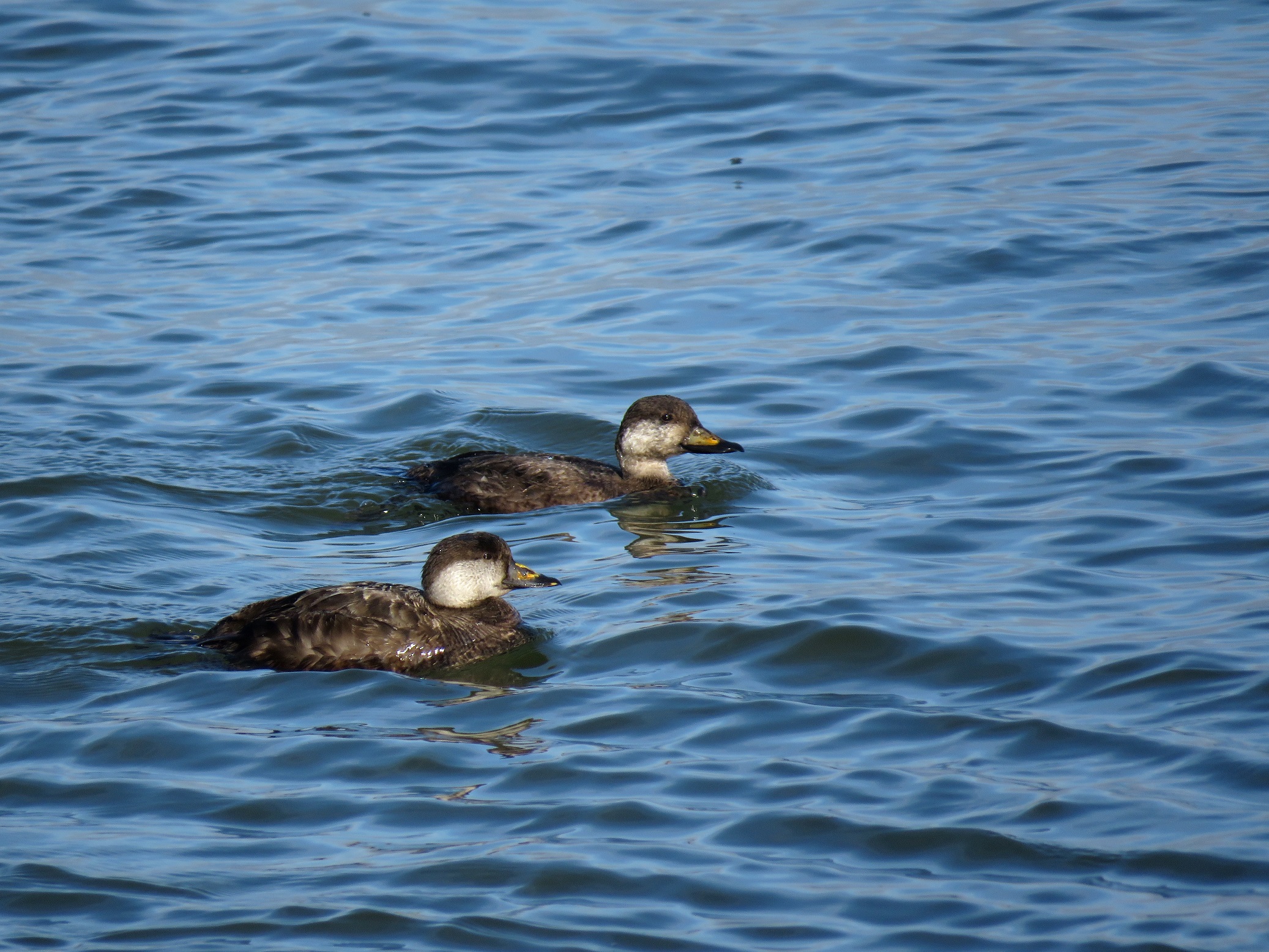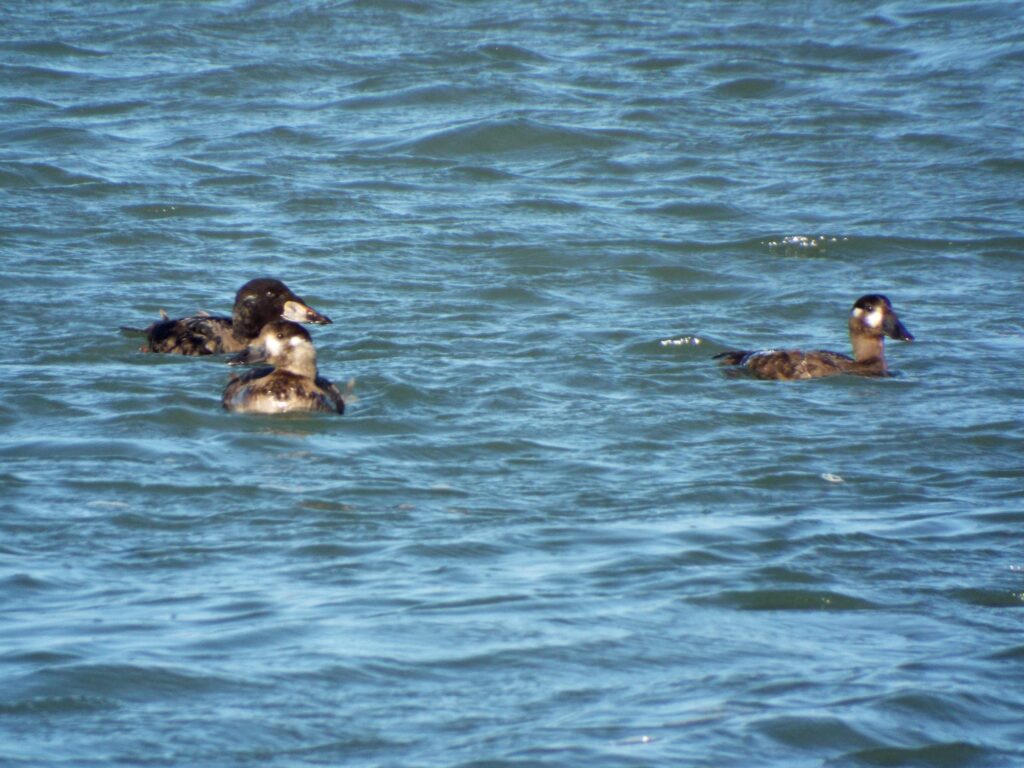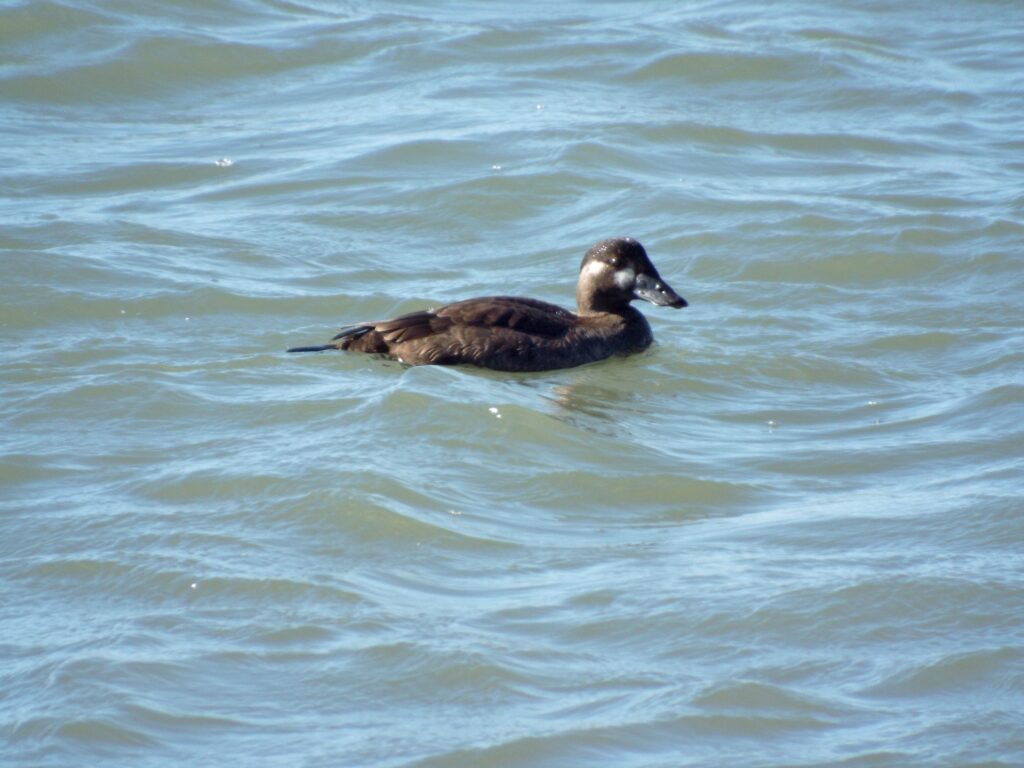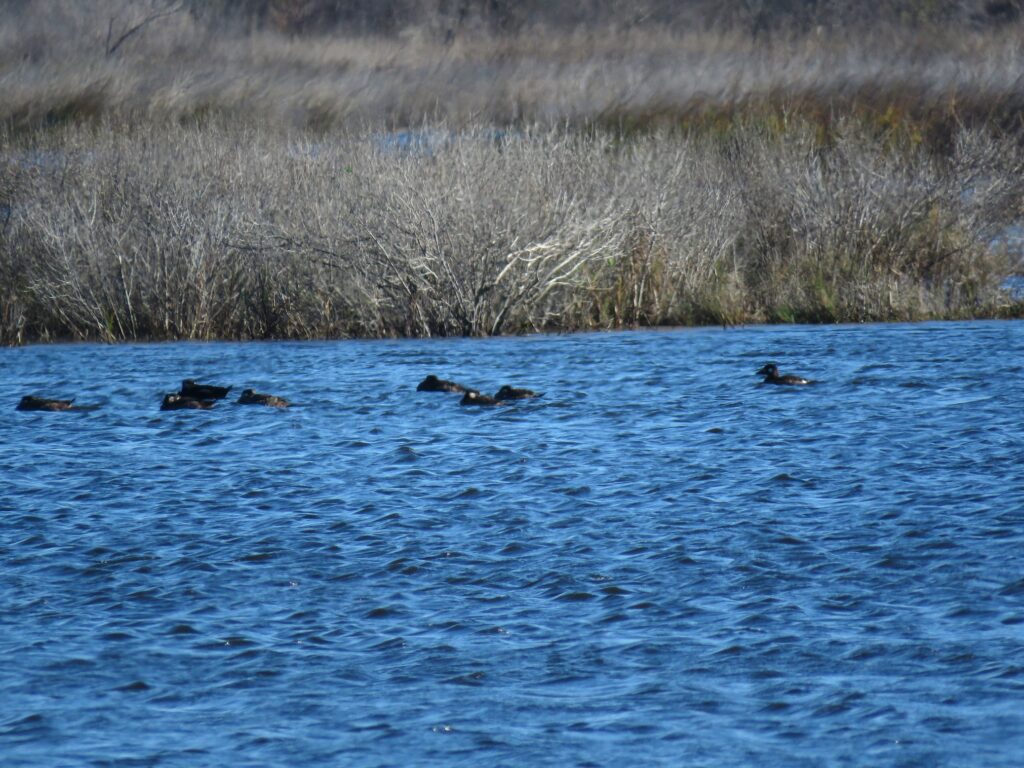
This week for Flora and Fauna Friday, it’s a trio of our cold weather sea-ducks, the Scoters of genus Melanitta.
Scoters are large sea-ducks that can be spotted buoyed off our coastline in winter. We have three species found all up the Eastern Seaboard, the Black Scoter (M. americana), Surf Scoter (M. perspicillata), and White-winged Scoter (M. deglandi). All three of our Scoters are large, dark-colored ducks. Their genus, Melanitta, literally translates to “black duck”. Fittingly, males of all three species are jet-black and females all a dark ebony-brown. As sea-ducks they, predictably, live out at sea. In South Carolina, they’re found almost exclusively floating on saltwater. Scoters are most prevalent and easy to see in the surf along our beaches, especially near river inlets, jetties, and groins. Their diet here in the Lowcountry is almost entirely shellfish, specifically mussels, clams, and other bivalves. Scoters dive underwater to pluck small clams out of the sand, wrench mussels off of rocks, and break off small oysters off of pylons. Scoters swallow shellfish whole and grind them to dust in their powerful gizzard.

Black Scoters are by far our most common Scoter species in the Lowcountry. Males are jet-black from tail to nose, except for a prominent tangerine-orange knob on top of their bill. Female Black Scoters are a dark grayish-brown throughout, except for pale cheeks that extend from below the eye and the base of their bill down to the nape of their neck. Black Scoters also have an obvious forehead, which the other two species tend to lack.


Surf Scoters are the next most common Scoter around Edisto Island. Males are ink-black across the body accented by a white nape, white forehead, white eyes, and a multicolored schnoz that is something to behold! Their bill runs straight back to the top of their head and is patterned with red, orange, and white surrounding a large black spot towards the base of the bill. Female Surf Scoters are a dark ebony-brown in color with a large, triangular bill and two pale spots on the face, one spot at the base of the bill and one back behind the eye.

White-winged Scoters are our hardest scoter to find but the easiest to identify on the wing. Males are mainly black but have walnut-brown flanks and a snow-white speculum in the middle of their wing. They also sport white eyes, white eye-bags, and their own impressive schnoz, this one with a pink tip and a prominent black knob on top but while still retaining the semblance of a forehead. Female White-winged Scoters are very similar in appearance to female Surf Scoters. However, they have that prominent white wing patch and their feathers of their face extend down the bill to their nares, AKA nostrils. This means the pale spot at the base of their bill also extends further forward on the face towards the nares, whereas on the Surf Scoter it ends sharply at the bill.